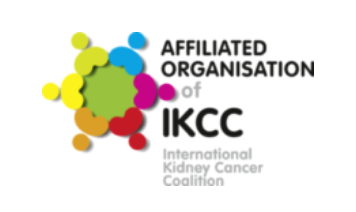What is a hospice?
Alison’s help sheet: WHAT IS A HOSPICE?
This is an information sheet written by someone who has experience as both a carer and a hospice nurse. She aims to raise awareness on the good work of the hospice and dispel any myths.
In the course of her career she has cared for many patients seeking control of their symptoms and caring for patients at end of life. She has lost loved ones, amongst them her father who died of kidney cancer in 2014. She feels privileged to work as a hospice nurse and states, “there is something very special about being allowed to share the intimate moments of other people’s lives”.
So your health professionals have mentioned a hospice…
Once the subject of the hospice has been raised, there may be many concerns and questions and if you do not know about hospices, being referred may not be a welcome idea. So many people panic when hospice is mentioned and may not know what to expect. I would like to explore some of these issues and provide some brief information and raise awareness about their work.
The hospice does much more than the general public might imagine. It’s a place that offers a safe haven of practical advice and highly specialist support for people with terminal and life-shortening conditions. The hospice is not just bricks and mortar, but represents a philosophical and ethical approach that helps you live more fully until death comes. This is not only for the patient, but the whole family.
“The nurses take enormous pride in the care they give to the patients”
Let me tell you about the work of the hospice
The hospice movement stemmed from the pioneer, Dame Cicely Saunders, who opened a hospice in South East London in the late 1960s. Her holistic approach cared for the patient’s physical, spiritual and psychological wellbeing. This was a new beginning for the care of people with a terminal illness. Dame Cicely passionately believed everyone should have access to the best care at the end of their lives. Hospices are widely recognised for their high quality of care for patients and their families.
When I tell people I work as a nurse at a hospice so many comment, “Really, isn’t that a depressing and morbid place to work?” In contrast, I find working there the complete opposite and it is an immense privilege to guide and care for both patients and their families during a very delicate, sometimes intimate, and intense time of their life. It is an honour for the hospice nurses to witness and contribute to such occasions.
Perhaps the best place to start is the popular notion of what is a hospice? A limited thought might be “hospices are the place where people go to die”. In reality, though, helping people to experience a dignified death is central to the work there, a hospice is so much more than that. What you see and feel in a hospice is like everyday life. Yes, there are times when we witness much sadness; however, it’s a place where the atmosphere may be filled at any given time with laughter and tears, happiness and sadness, and frequently complemented with an air of deep reflection. Generally, it’s a humbling, caring and cheerful environment where there is huge amount of humanity.
Most importantly the hospice is about living, not dying
I’m sure that you would agree life is unpredictable; one fact we can be sure of, all of us will die sooner or later, yet no one knows exactly when this will be. Some patients may be involved with the hospice for weeks, months or even years. Whatever stage of the illness the hospice embraces, making life better for the patient and, indeed, more comfortable, while always treating the patient with the greatest of respect and sensitivity. The overall ethos of the hospice is to get the most out of the time remaining; it’s about care, not cure. The focus of care is good symptom control and emotional support. It is important we help you to alleviate fears or concerns and enhance the quality of your daily life.
“It’s more than just a job. Sometimes the patients just need a touch on the hand, a touch on the shoulder, a smile; just let them know that we are there for them.”
Generally, hospices are relatively small community organisations, and they offer both day services and a 24-hour in-patient unit, which comprises of around 8-20 hospice beds. The ratio of staff to patient is usually much higher compared to a conventional hospital ward. In contrast to restricted hospital hours, hospices offer open visiting to families. Many hospices are set within beautiful and relaxing gardens. They offer a specialised service, which brings together a whole range of professionals to support the patient and their family’s needs.
Hospice at home
Hospice teams have an emphasis on the ‘hospice at home’ care service. There are many patients who prefer to engage with the services from the comfort of their own homes, in familiar surroundings and the frequent presence of family members. The hospice staff work alongside GPs and district nurses offering care in their own home. It’s all about partnership working and choice. Home visits are arranged in accordance with patient needs.
Palliative care
Hospices aim for holistic patient-led care; we understand each patient is unique, so we support each patient’s particular needs. We work in partnership with patients, and it’s so important your voice and wishes are always heard. People are admitted to the in-patient unit for different reasons; for example, you may choose to come to the hospice for convalescence, respite for you or your family, perhaps to control a symptom such as pain or nausea to ensure you feel more comfortable and relaxed. It is a client-centred service and is led by what the patient needs at that moment in time. Hospice provides palliative care where we think about the person rather than the disease. Practice is holistic and looks not only at the physical needs but also social, spiritual and psychological care, and we guide patients and their families to identify future and individual wishes and care preferences.
A scenario to share:
Hospices tend not to offer long-term in-patient care. Often, people come to the inpatient unit to get good management of troublesome symptoms and may be subsequently discharged back home once these have been addressed.
On one occasion we supported a young man who was finding difficulty dealing with his terminal illness, which was compounded by anxiety. He was admitted to the hospice for some respite, was seen by a therapist, attended mindfulness and meditation sessions, and his medication was reviewed by the consultant. After a few days, he returned home with the tools to cope with his diagnosis. His sleep pattern was much improved and he described the hospice as a huge comfort blanket.
Day centre services
Most hospices have a day care centre, which provides all kinds of activities allowing the patients and family to meet others in similar situations. There are lunches, activities, music therapy and an abundance of support. There are opportunities to try out a specific therapy such as reflexology or a head massage. You will be able to discuss aggravating symptoms with the doctors and nurses as well as reviewing your mediation. The team will be able to direct you to individualised services for conditions such as breathlessness, fatigue. There are also relaxation and mindfulness workshops, which address mental wellbeing. In addition, it may be appropriate to meet a physiotherapist for rehabilitation and exercise therapy.
“It’s so humane and down to earth”
Celebrations
Families matter; we get to know each family well, we focus on the patient, family and even include their pets. We help families celebrate their special events such as weddings, birthdays etc.
A scenario to share:
The staff organised a surprise and special wedding anniversary. The wife on arrival was escorted through an arch of nurse’s arms, their wedding hymn played, a bouquet of flowers and a glass of champagne was presented and she was met by her husband of 40 years. They both agreed it was the most memorable and best anniversary they had had, so much joy tinged with sadness.
Family support service
This service supports the whole family, and includes practical and financial advice and counselling services, including support for children. Counselling sessions are free of charge. Family support are fully aware that the effects of bereavement is an enormous challenge to the person affected and to their relatives. When someone close to us is ill or dying it makes a difference when we are able to discuss things openly.
“I appreciate all the smiles, the tenderness and extra special care”
Funding
Hospices are very much part of the local community, with funding streams coming from charity donations. The contribution that volunteers make to the hospice services is overwhelming and essential. As I arrive to work on a night shift, I’m greeted by volunteers working late in the evening, managing the front desk. Gardening volunteers potting bulbs, pruning bushes and maintaining the beautiful gardens. Beverage volunteers delivering refreshments to both patients and visitors, you can even have a glass of your favourite tipple! In the community you find hospice charity shops full of donations. I’m sure you have seen your local hospice advertising community fund raising events, midnight walks, quiz nights… all this provides the funding to support the patient’s needs.
“They have given my son everything he expected and much, much more”
Help line
A help line is a reassuring support for both patients and the family and enables access to the 24-hour specialist hospice phone line. It is not unusual to receive a call from a concerned patient or relative during the night. This ensures a safety net for our families during out of hours.
In conclusion
The hospice do care for people towards the end of their life and the team relate to people’s loss and pain. We sometimes find people are not ready to open up, talk or accept our service and support. Maybe they are finding things too difficult or emotionally challenging to process a referral to the hospice. We understand and that is fine, the hospice is always there when you are ready.
I want you to understand that a hospice is not a dark, depressing place, but a bright, supportive organisation within peaceful settings and tranquil gardens. The team use their expertise to assist and manage symptoms of people’s conditions and provide care that everyone deserves; that may be for a very short time or weeks, months or even years. We will be honest but gentle, and will be there to walk with you and your family on their journey and enable them to feel safer, more secure and not alone.
“The hospice is an extra special place”
Further information
Hospice UK is the national charity for hospice care. They provide a database where you can find your local hospice.
National Council for Palliative Care
Marie Curie Care and support through terminal illness
Please help other patients:
Please keep us updated with useful information that will help other cancer patients. You can email us with your tips so we can regularly add to this resource. Please email us.
Thanks to all the KCSN members for their input, and especially to Alison for her patience and willingness to collate this information to help and support others.
Written November 2017
Download a pdf of this help sheet here: What is a hospice?


